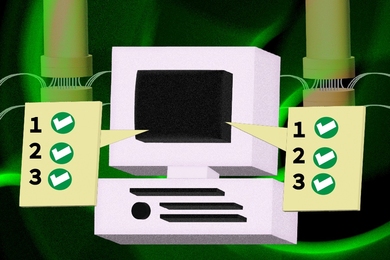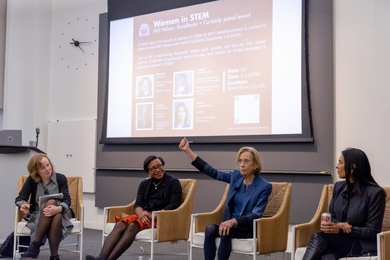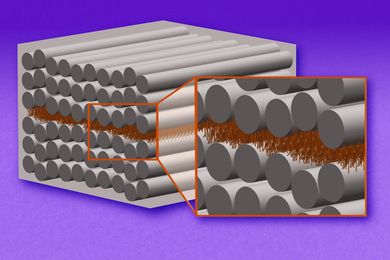The Lemelson-MIT Program has announced that Jordan Sand has won its third annual high school invention apprenticeship award.
Mr. Sand, a 12th-grader at Ellendale Public School in Ellendale, ND, was selected for his dedication to preserving the environment through his inventions and his desire to help his community by finding new uses for local crops. One of his early inventions is a solar distillation device to purify water outdoors during the cold North Dakota winters, which he built in seventh grade. Another invention is a solar-heated birdbath that keeps the birds' water thawed during icy winters.
In 1997-98, Mr. Sand embarked on research to help American farmers create alternative uses for their crops. His studies proved that various types of grain straw (flax, wheat, corn) and cattails can be used to make paper. Using these raw materials -- which are annual plants that need no reseeding, herbicides or pesticides -- to manufacture paper or other new products would provide additional income to farmers from crops that would not ordinarily be income-producing.
To further his research, Mr. Sand contacted Ulrike Tschirner, associate professor of wood and paper science at the University of Minnesota at St. Paul, who offered him the opportunity to spend several days at the university, which is a six-hour drive from his home. Mr. Sand spent six days there, using chemicals that were unavailable at his school's laboratory to pulp, bleach and make paper from nontraditional raw materials such as corn stalks, cattails and cereal straws.
"The experience of working in a college laboratory was awesome," he said. "The equipment available was unlike anything I knew existed."
Mr. Sand intends to pursue a career in plant science, concentrating on the genetic engineering of seeds. He believes his paper-making concept is economically feasible on a global scale, with its only drawback being the costs of gathering and transporting raw materials to a processing plant.
The Lemelson-MIT Invention Apprenticeship, designed to provide hands-on experience in a scientific and technological environment, is an award given annually to one American high school student for remarkable inventiveness. Depending on career interests, the winner is paired with a leading scientist, technologist, engineer or entrepreneur anywhere in the country who serves as an "invention mentor." The student spends up to three weeks at the mentor's work site to learn more about the process of inventing first-hand. The student can choose to work on a project of his or her own design or assist in one of the mentor's projects.
Mr. Sand's mentor will be Ashok Gadgil, a senior scientist for the Lawrence Berkeley National Laboratory. Dr. Gadgil researches drinking water disinfection, indoor air pollutants and energy efficiency opportunities.
Mr. Sand's advice to other budding inventors: "Just keep going; anything is possible."
Last year's Invention Apprenticeship winner, Charles Johnson of Hamilton, TX, spent three weeks at the Intel Architecture Labs, the company's research center in Hillsboro, OR, working to find new uses for computing in healthcare environments. He is now studying biomedical science in the premedical program at Texas A&M University.
The Lemelson-MIT Program, based at the Sloan School of Management, was established in 1994 at MIT by inventor Jerome H. Lemelson and his wife Dorothy. It is funded by the Lemelson Foundation, which supports other invention initiatives at the Smithsonian's National Museum of American History, Hampshire College and the University of Nevada at Reno.
For more information about the invention apprenticeship, contact Kristin Joyce at x8-0632 or visit the Invention Dimension at http://web.mit.edu/invent.
A version of this article appeared in MIT Tech Talk on November 15, 2000.






